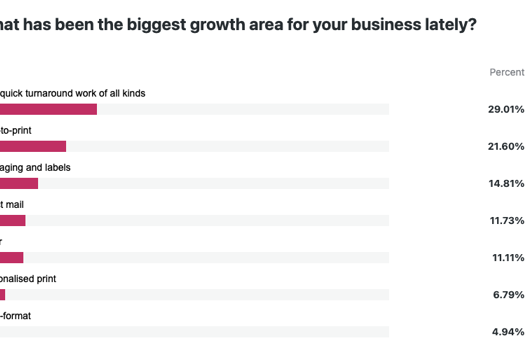What do you feel were the main trends and key industry developments in 2024?
In 2024, our industry centred around three key areas. Firstly, the continued consolidation as the sector evolved and right-sized itself for future demands. Then the positive impact of Drupa, where strong attendance and engagement from key stakeholders drove future investment plans and decisions. And, thirdly, addressing ongoing challenges, including attracting skilled talent from younger generations and advancing automation to minimise touchpoints across production processes.
Additionally, the evolution of inkjet platforms remained a critical focus, driving efficiency and innovation throughout the year.
What do you expect to be the main trends, key industry developments, and biggest opportunities for printers in 2025?
As we step into 2025, we anticipate the ongoing evolution of the trends that emerged and thrived in 2024, with likely further rationalisation and consolidation occurring throughout the industry.
We expect the HID [Hunkeler Innovationdays] platform will be pivotal in highlighting advancements in inkjet technology, enhancing efficiency in critical communication domains, and expanding the potential for offset migration.
The greatest opportunities lie in print organisations’ ability to embrace digital alternatives and champion print as an essential component of the communication mix. This harmonious approach will highlight print media's unique worth – its tactile quality, permanence, and profound impact.
Print organisations should actively stress these assets, even as they acknowledge the role of digital-only methods. Providing robust, independent data and statistics for validation becomes essential in this context, serving as a sturdy proof point underscoring the pivotal role of print media in the wider communication ecosystem.
What are Ricoh’s own hopes and aims for 2025? Can you tell us about anything exciting in the pipeline?
Ricoh is fully committed to innovation and development in this sector, the recent addition of the Pro Z75 and VC80000 is a true testament to this.
The introduction of the VC40000 and the launch of a mono-only version extend the product portfolio to support future requirements in critical communications, book production, and graphic arts applications. This will be underpinned by further development in workflow, MIS and automation using the latest AI capabilities.
Additionally, the extension of our Industrial Wide Format platforms with the recent launch of Flora X20 expands the reach and capability in the wide-format space.
As a business, we hope our Henkaku philosophy (transformative innovation) continues to resonate with our customers and prospects in identifying synergies and business opportunities and co-creating, thus providing the opportunity for true partnership.
How can suppliers better help printers navigate the challenges and seize the opportunities in 2025?
Given the sector's challenges, the traditional supplier-customer approach is no longer applicable. Suppliers need to strive to become trusted advisors to not only provide technology and workflow platforms but, more importantly, to advise.
This should extend to all business challenges, including IT security, process automation and long-term financial success. The Ricoh philosophy of Henkaku, has been implemented to move the agenda from traditional technology capabilities to creating a process where we can co-innovate and achieve better business outcomes.
Additionally, suppliers, who often have greater access to market intelligence and research, should share this valuable knowledge with their clients to empower them to make more informed business decisions and plan for the future. A prime example of this is the recent IPIA research we co-funded, where we saw immense value in sharing these insights with our network to foster innovation across the board.
What did you think of Drupa? Do you plan to attend the show in 2028?
Drupa helped to validate our sector and breathe confidence again. Whilst general attendance was lower than in previous years, the quality of attendees was great.
This year, the conversations were positive and optimistic, and we enjoyed unprecedented success with orders placed and growth in our sales pipeline. Consideration is certainly being given to attendance in 2028, and we will continue to evaluate the viability and returns over the next couple of years.










